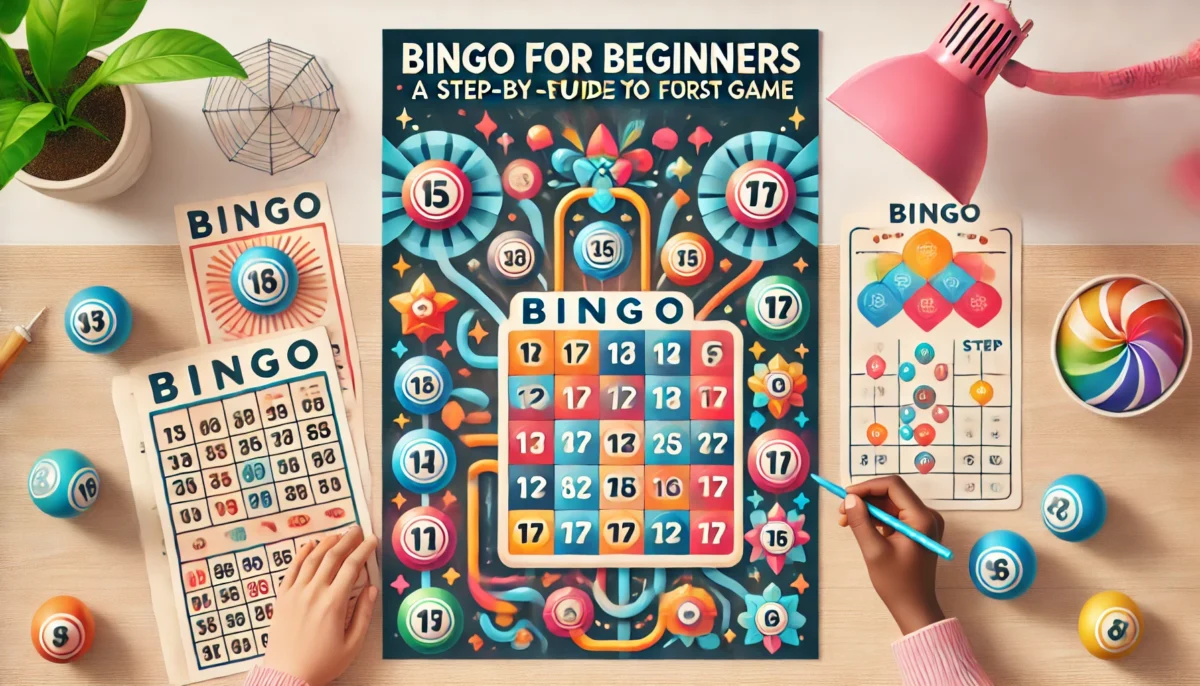Bingo is one of the most popular and easy-to-learn games, loved by people of all ages for its simplicity, social atmosphere, and the thrill of shouting “Bingo!” when you win. Whether you’re heading to a local bingo hall, playing with friends, or exploring online bingo platforms, this guide will walk you through everything you need to know to confidently play your first game.
From understanding the basics to mastering your first bingo card, we’ll cover it all. So grab your dauber, get ready to mark your numbers, and let’s dive into the exciting world of bingo!
What Is Bingo?
Bingo is a game of chance where players aim to match numbers on a card with those called out by a caller. The objective is to complete a specific pattern, which can vary by game. When you achieve the pattern, you shout “Bingo!” to claim your prize.
Bingo is often played in social settings like bingo halls, community centers, or online platforms, making it a great way to connect with others while having fun.
Step 1: Understanding the Basics
The Bingo Card
A bingo card is a grid filled with numbers arranged in rows and columns. The standard format varies slightly depending on the type of bingo you play:
- 75-Ball Bingo: Common in North America, the card has a 5×5 grid with the word “BINGO” at the top. The center square is a free space.
- 90-Ball Bingo: Popular in the UK and other countries, the card has three rows and nine columns, with 15 numbers per card.
The Caller
The caller is responsible for announcing the numbers drawn, either by randomly selecting balls from a machine or using a digital random number generator.
The Patterns
Each game specifies a pattern you must complete to win. Common patterns include:
- Straight Line: A row, column, or diagonal.
- Full House: All numbers on your card.
- Specific Shapes: Letters, numbers, or other designs (e.g., an “X” or a box).
Step 2: Preparing for Your First Game
Choose Your Bingo Venue
- Traditional Bingo Halls: Offer a lively, social atmosphere with physical cards and daubers.
- Online Bingo Platforms: Provide convenience, automated number marking, and a variety of game styles.
Get Your Supplies
- Physical Bingo: You’ll need a bingo card and a dauber (a marker used to mark off numbers).
- Online Bingo: Simply sign up on a reputable bingo site, select a game, and purchase your cards.
Set a Budget
Decide how much you’re willing to spend on bingo cards. Some games have affordable cards starting at just a few cents, while others may require a larger buy-in.
Step 3: Playing Your First Game
1. Listen Carefully
The caller will announce numbers, one at a time. Pay close attention and mark off the numbers on your card as they are called.
2. Watch for the Pattern
Keep track of the game’s winning pattern. Once you’ve completed it, shout “Bingo!” loud enough for the caller to hear. In online games, the system automatically detects winners, so you don’t need to shout.
3. Verify Your Card
If you’re playing in a physical setting, a staff member will check your card to confirm your win. In online bingo, verification is instant.
4. Claim Your Prize
Winners typically receive cash, vouchers, or other prizes. Make sure you know the prize structure before the game starts.
Types of Bingo Games
There are several types of bingo games, each with its own rules and formats.
1. 75-Ball Bingo
- Grid: 5×5 with a free space in the center.
- Popular In: North America.
- Patterns: Straight lines, diagonals, or unique shapes.
2. 90-Ball Bingo
- Grid: Three rows and nine columns.
- Popular In: UK and Australia.
- Winning Patterns: One line, two lines, or a full house.
3. Speed Bingo
- Grid: Smaller grids (e.g., 3×3).
- Unique Feature: Faster pace with quicker calls.
4. Online Bingo Variants
- Themes: Some online platforms offer themed games (e.g., movie or holiday-themed bingo).
- Jackpot Bingo: Games with progressive jackpots that grow with each play until someone wins.
Tips for Beginners
1. Start Small
Begin with a few cards to avoid feeling overwhelmed. As you gain confidence, you can try managing multiple cards.
2. Know the Rules
Understand the specific rules of the game you’re playing, including the required pattern and prize structure.
3. Practice Online
Many online platforms offer free bingo games where you can practice without spending money.
4. Join a Community
Bingo is a social game! Whether in-person or online, engage with other players to enhance your experience.
5. Stay Alert
Bingo requires focus. Missed numbers can cost you a win, so pay attention to the caller.
Advanced Tips
Once you’re comfortable with the basics, you can start incorporating these advanced tips:
- Manage Multiple Cards: Use different colors for daubers or rely on automated marking in online bingo to handle multiple cards.
- Track Hot Numbers: Some players like to track frequently called numbers for fun, though it doesn’t affect the outcome.
- Timing Matters: Play during off-peak hours for fewer competitors, increasing your odds of winning.
Online vs. Traditional Bingo
Advantages of Traditional Bingo
- Social atmosphere with live interactions.
- Physical cards and daubers add to the excitement.
Advantages of Online Bingo
- Play anytime, anywhere.
- Automated marking reduces the chance of errors.
- Wide variety of game styles and themes.
Final Thoughts
Bingo is more than just a game of chance—it’s a fun, social experience that’s easy to learn and accessible to everyone. By understanding the basics, preparing ahead of time, and following a few simple tips, you’ll be ready to enjoy your first game and maybe even shout “Bingo!”
Whether you’re playing in a bustling bingo hall or from the comfort of your home, remember that the ultimate goal is to have fun. So grab your cards, focus on the numbers, and get ready for an exciting journey into the world of bingo!
